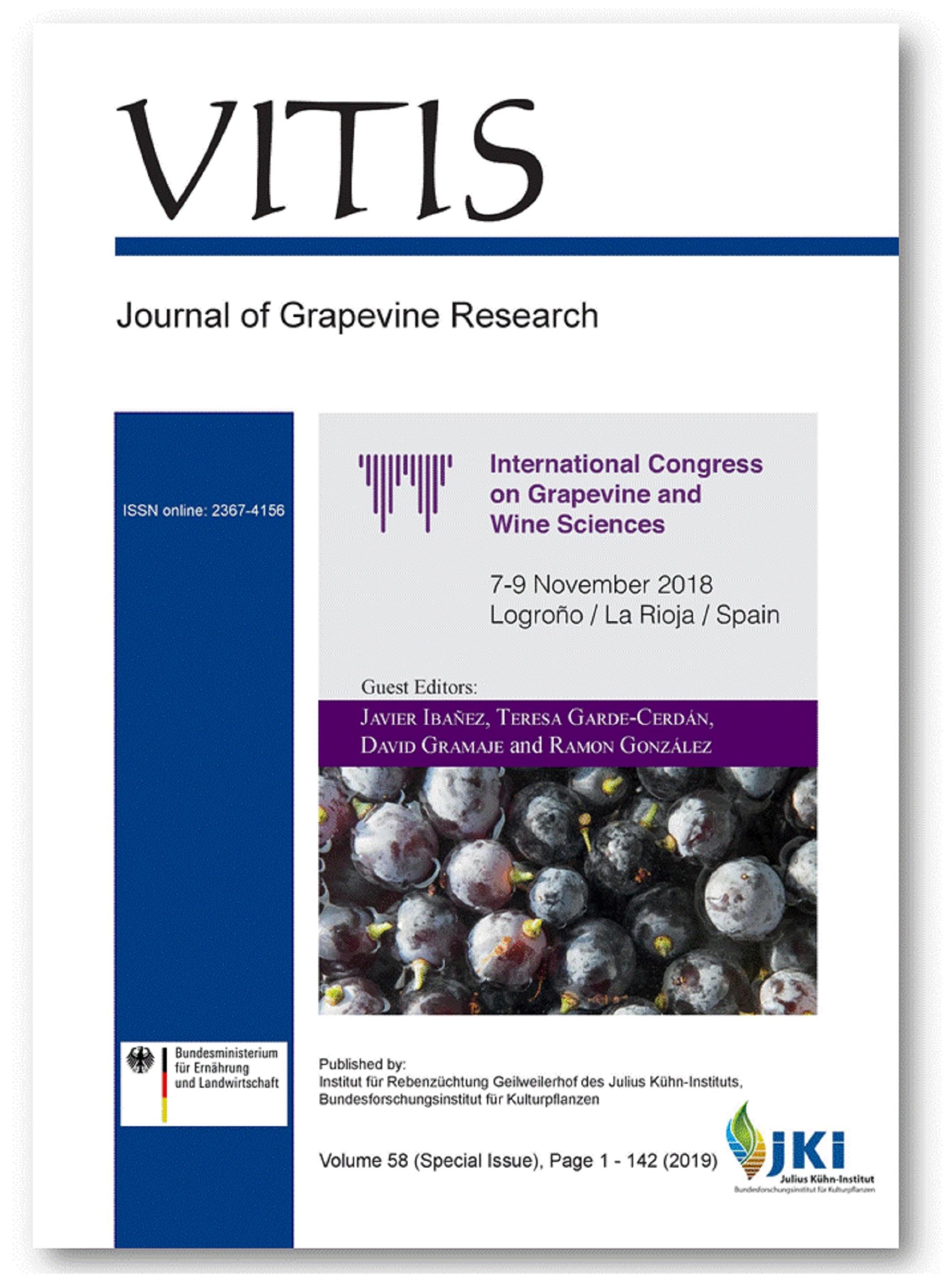Discrimination of aging wines with alternative oak products and micro-oxygenation by FTIR-ATR
DOI:
https://doi.org/10.5073/vitis.2019.58.special-issue.77-82Keywords:
red wine; FTIR-ATR; aging system.Abstract
The use of alternative oak wood products (AOP), such as chips, cubes and staves, among other, from different geographical origins is a common practice for wine aging, where the micro-oxygenation (MOX, adding small doses of oxygen constantly over time) is essential to obtain a final wine more stable in time and with similar characteristics of barrel-aged wine. The aim of this work was to identify if spectroscopic techniques allow to discriminate wines aged with alternative oak products (chips and staves) from different oak woods (American, French and Spanish) and a floating micro-oxygenation (20 µg·L−1) after 10 years of bottling and compared to those aged in barrels. The spectral information and analysis were performed in a FTIR-ATR, with 128 scans per spectrum at a spectral resolution of 8 cm-1 in the wavenumber range from 4,000 to 450 cm-1. Principal component analyses of spectral information were performed using the Unscrambler® X. The results indicate that with this technique it is possible to clearly separate the wines aged by the three systems (chips, staves and barrels) in the case of American oak. In the case of French oak, wines aged in chips were clearly differentiated from wines aged in staves with those aged in barrels between the two. It is also possible to clearly separate aged wines with different Spanish oak systems. The application of FTIR-ATR appears to be a powerful technique for discriminating the quality of wines aged by different AOPs and wood barrels from different geographical origins.
Downloads
Published
Issue
Section
License
The content of VITIS is published under a Creative Commons Attribution 4.0 license. Any user is free to share and adapt (remix, transform, build upon) the content as long as the original publication is attributed (authors, title, year, journal, issue, pages) and any changes to the original are clearly labeled. We do not prohibit or charge a fee for reuse of published content. The use of general descriptive names, trade names, trademarks, and so forth in any publication herein, even if not specifically indicated, does not imply that these names are not protected by the relevant laws and regulations. The submitting author agrees to these terms on behalf of all co-authors when submitting a manuscript. Please be aware that this license cannot be revoked. All authors retain the copyright on their work and are able to enter into separate, additional contractual arrangements.



